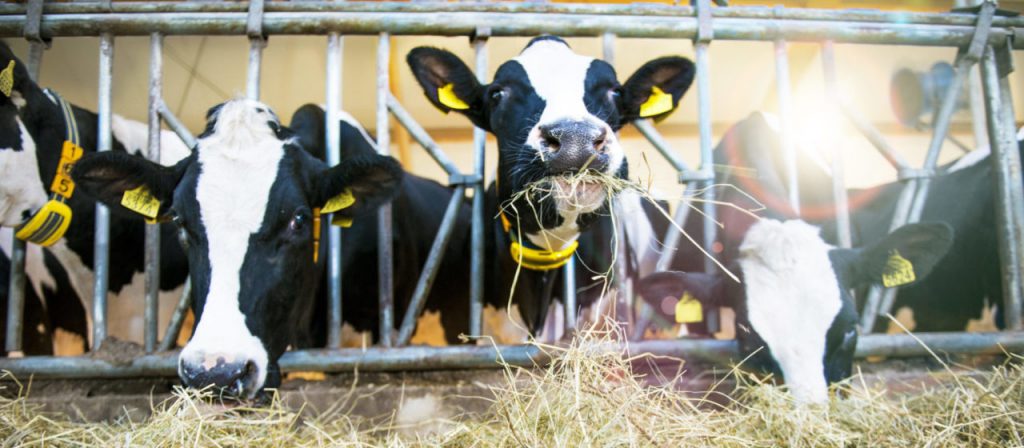84339190485

Historically, animal farming has always been decentralized, on a scale that a few individuals can get together and manage. And until a decade ago, most animal farmers did not have access to modern technologies such as high-speed internet, smart phones and cheap computing power. Now, both these conditions are changing quickly.
AI promises precision livestock farming. Artificial intelligence enables producers to examine data acquired by sensors and other hardware technologies, and to propose interpretations and solutions by simulating human decision-making – possibly revolutionising the way a dairy farm functions.
The primary cost driver in animal farming is stocking rate, defined as the number of animals grazing on a given amount of land for a specified time. In addition to this, as any farmer will tell you, the two major costs in animal farming are feed and disease management.
People assess feed rates, identify and treat diseases and take care of production. This places limits on how many animals can be cared for. Theoretically, if fewer people can take care of many more animals, this will remove the biggest bottleneck in increasing production as well as profits. Along with breeding, proper livestock management and monitoring practices like pre and post-delivery care of livestock, timely vaccination and deworming care, tailored nutrition and feed management, are needed to boost performance.
Artificial intelligence enabled chip and sensor technology, mobile application mapping veterinary services, and drones fitted with thermal sensing, are transforming the way livestock farmers monitor and protect their animals. This is required to detect and monitor health aspects from eating, drinking, resting, fertility, temperature and more.
To apply mechanistic models in animal farming, we need to collect a large volume of diverse datasets. Some of them may include local weather data, air quality data, voice signals of animals, visual data of various animal movements and other such animal behavior data. Various sensors can help us capture real-time data effectively.
A contagious disease outbreak can cause severe losses in a large animal farm, where thousands of animals are sheltered together. It is also equally hard for a farmer or caretaker to spot changes in feeding habits, fluid intake and unusual body movements of a sick animal among a large herd of animals. This is where sensors, big data and ML can play an essential role in helping farmers become aware of such abnormal behaviors, thereby promptly predicting and preventing disease outbreaks. The alerted farmers can then take timely measures to prevent further spread of the infection. Such a system saves several animal lives and prevents financial losses.
During the process of letting the cattle out for grazing, someone has to do the task of manually counting the number of cattle being let out and do the same when they come back. Annotation localization can help to place the bounding boxes over the animals. With annotation classification, we can add species labels to each annotation. The labeled dataset can then to train an algorithm to identify the cattle and count them when they are let out for grazing or let in. With emerging technology it can track livestock movement and alert farmers, through mobile messages, in the event that animals wander beyond farm boundaries.
To sum it all up, artificial intelligence allows easy data entry on farm records, monitoring farm activities, analysing economic performance, improving animals’ health, and improving soil richness. All these features and solutions strive towards ‘smart farming’.
Image and video annotation are proving to be critical components in the development of AI systems for cattle management. It is critical for developers to have access to the necessary volumes of acceptable data in order for the emerging technology to meet its stated goals.
Vigreenfarm offers to annotate the images for varied AI models used in agriculture and farming. From robotics, to autonomous flying objects like drones, it can create high-quality training data sets for computer vision in precise farming. It is working with well-trained annotators to annotate the images with best quality for accurate recognition by machines for right predictions.